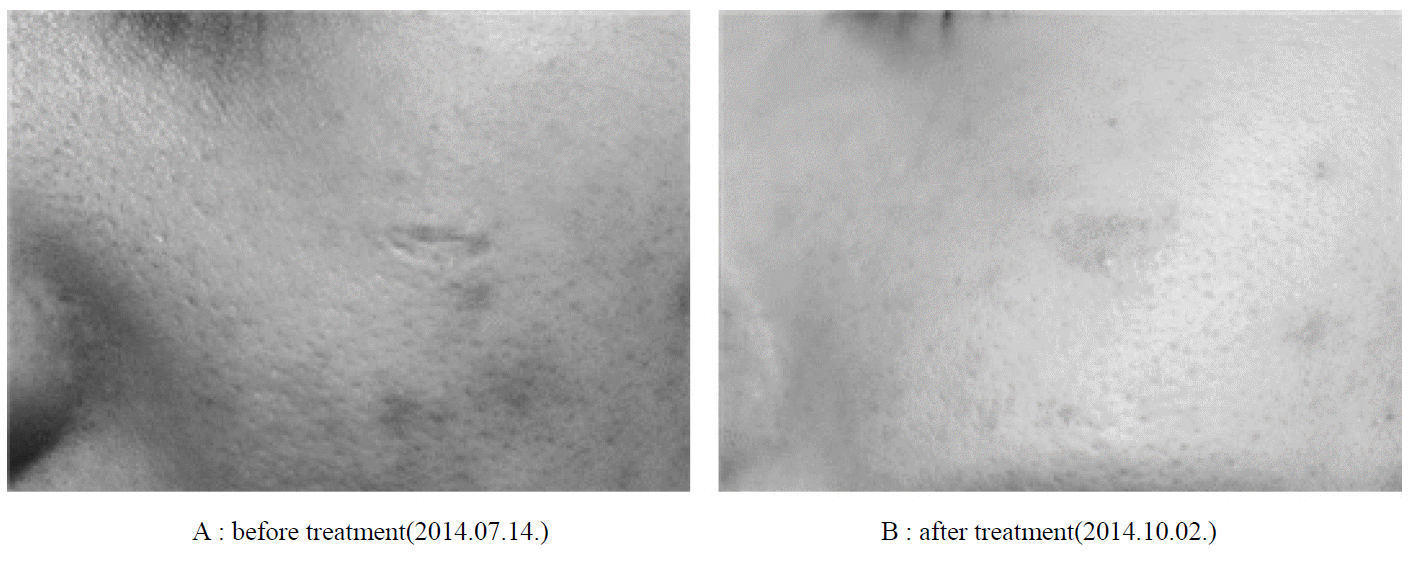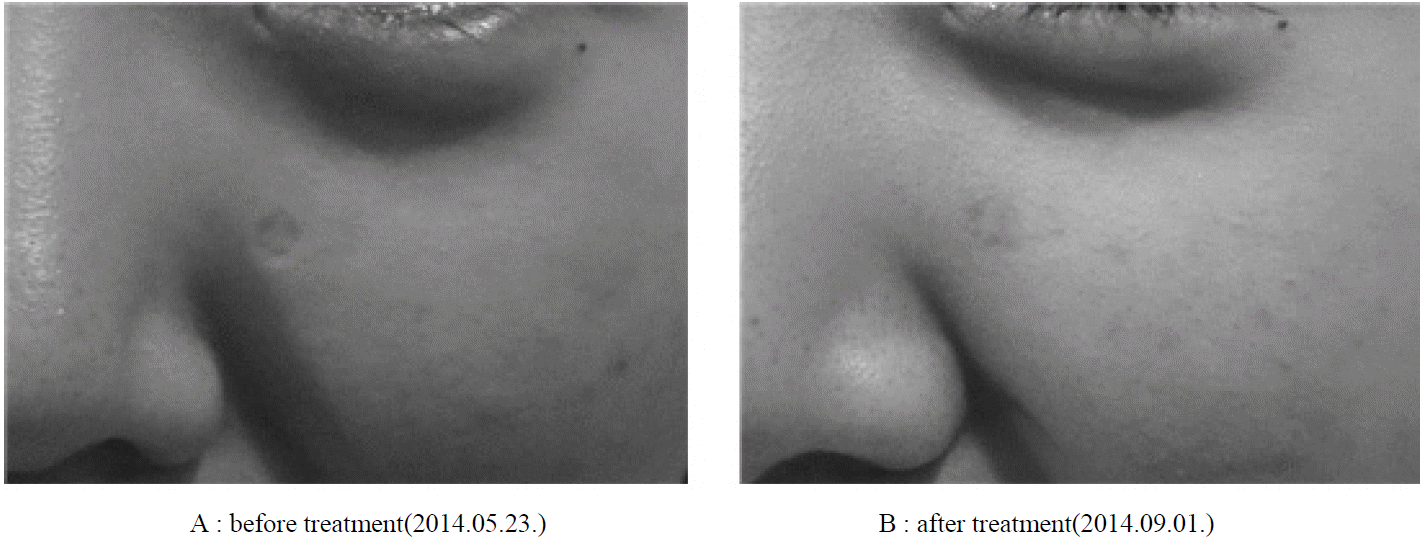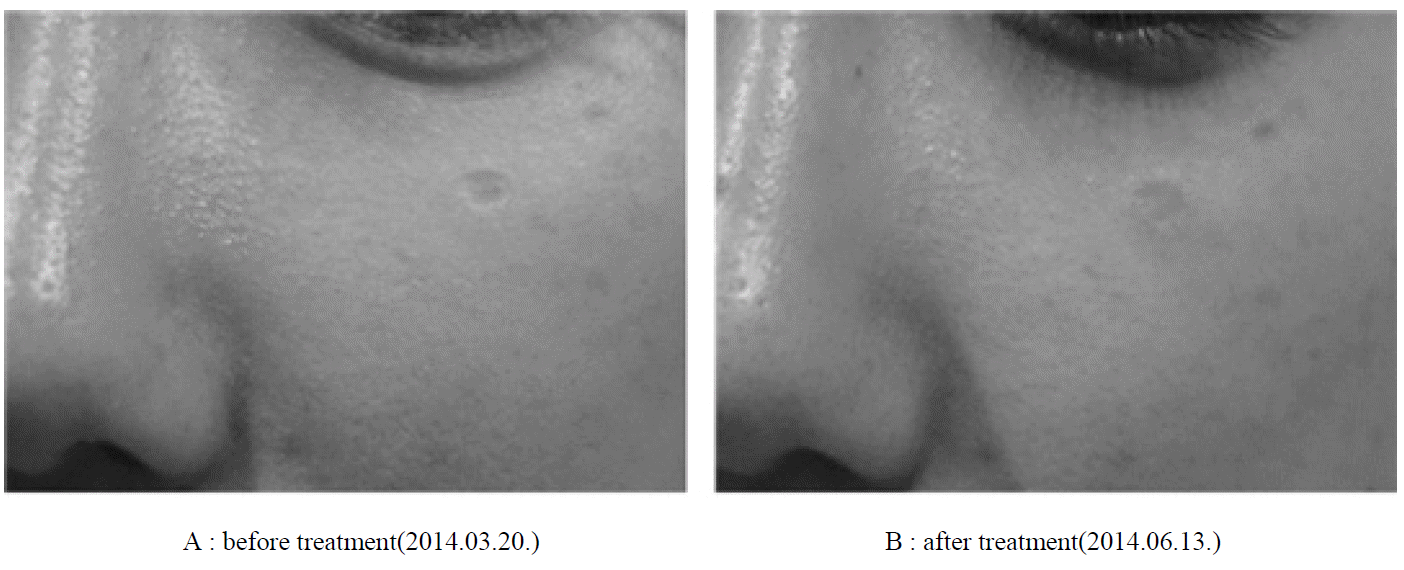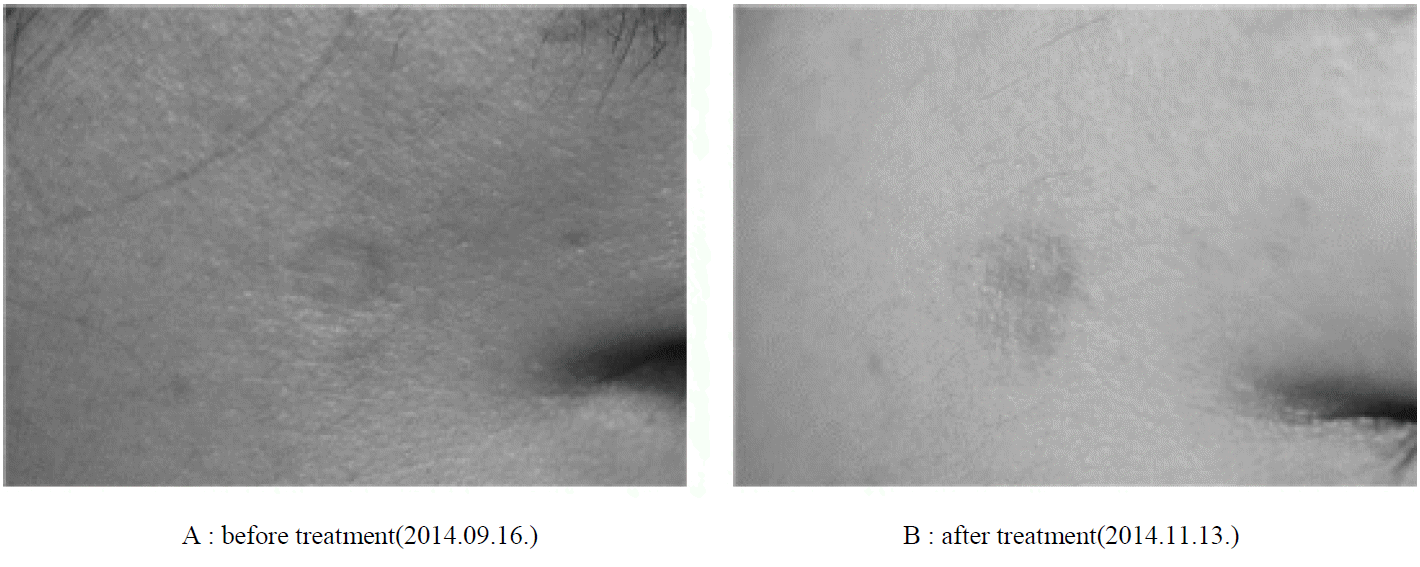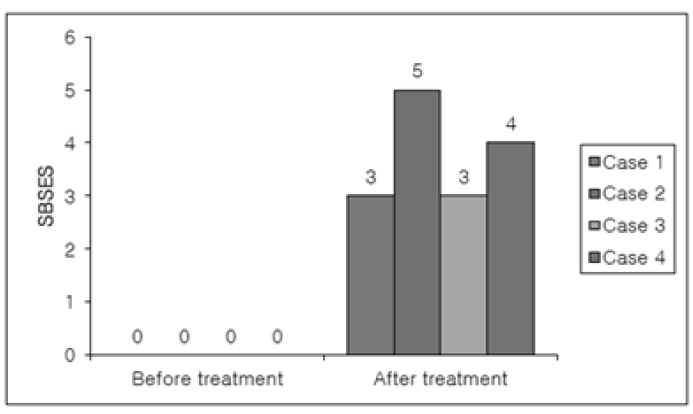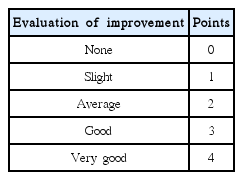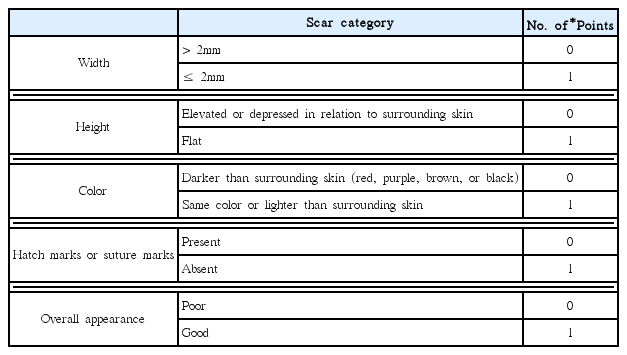References
1. Freedberg IM, Eisen AZ, Wolff K, Austen KF, Goldsmith LA, Katz SI. Fitzpatrick’s Dermatology in general medicine 6th edth ed. New York: McGraw-Hill; 2003. p. 22–3.
2. Akasaka Y, Fujita K, Ishikawa Y, et al. Detection of apoptosis in keloids and a comparative study on apoptosis between keloids, hypertrophic scars, normal healed flat scars, and dermatofibroma. Wound Repair Regen 2001;9(6):501–6.
3. Lee SJ. The focal laser treatments on depressed acne scars. Kor J Dermatol 2011;63(1):290.
4. Gwon JC, You GR, Jung SD. Western medicine and surgery on the comparative study of Oriental Medicine. The Journal of Korean Academy of Medical Gi-Gong 2006;9(1):238–74.
5. Ju HJ. Acupotomy Seoul: Jungdam; 2003. p. 9–42.
6. Choi YT. The Acupuncture and Moxibustion (The second volume) Seoul: Jipmoondang; 2007. p. 1035–6.
p. 1046–7.
7. Lee KS, Kim YR, Choi HS. Case Study of Treating Acne Scar Using Scar Regeneration Acupuncture Therapy and Micro-needle Therapy. The Acupuncture 2012;29(4):81–91.
8. Baek SC, Hong MS, Jegal H, et al. A Clinical Report on The Atrophic Acne Scar with Subcision. The Journal of Korean Medical Ophthalmology & Otolaryngology & Dermatology 2012;25(4):80–8.
9. Singer AJ, Arora B, Dagum A, Valentine S, Hollander JE. Development and validation of a novel scar evaluation scale. Plast Reconstr Surg 2007;120(7):1892–7.
10. Ritvo E, Del Rosso JQ, Stillman MA, La Riche C. Psychosocial judgements and perceptions of adolescents with acne vulgaris: A blinded, controlled comparison of adult and peer evaluations. Biopsychosoc Med 2011;5(1):1–15.
11. Robert R, Meyer W, Bishop S, Rosenberg L, Murphy L, Blakeney P. Disfiguring burn scars and adolescent self-esteem. Burns 1999;25(7):581–5.
12. Bakker A, Maertens KJ, Van Son MJ, Van Loey NE. Psychological consequences of pediatric burns from a child and family perspective: a review of the empirical literature. Clin Psychol Rev 2013;33(3):361–71.
13. Patel L, McGrouther D, Chakrabarty K. Evaluating evidence for atrophic scarring treatment modalities. JRSM Open 2014;5(9):1–13.
14. Han JB. What is IMS? The Acupuncture 2007;24(5):127–36.
15. Korean Wound Management Society. The new wound healing Seoul: Korea Medical Book Publisher; 2002. p. 46–67.
16. Jang EH, Kim SC, Lim NR, et al. Case Study of Oriental Medicine Treatment with Acupotojy Therapy of the Herniated Lumbar Intervertebral Disc Patient. The Acupuncture 2008;25(4):171–81.
17. Kwak BM, Hong KE. Four Case of HIVD-Lumbar Spine Patient Treated with Acupotomy. The Acupuncture 2008;25(4):149–56.
18. Zhu HZ. Acupotomy Beijing: Chinese Medicine Publishing Company; 1992. p. 9–42.
19. Kang HC, Lee JT, Kim YJ. A Study on the Blood-Letting Therapy of SoMoon. J Korean Medical Classics 2013;26(4):325–39.
20. Jin J. Study of XieXue method [dissertation]. Daejeon: Daejeon Univ; 2007.
21. Orentreich DS, Orentreich N. Subcutaneous incisionless(subcision) surgery for the correction of depressed scars and wrinkles. Dermatol Surg 1995;21(6):543–9.
22. Aalami Harandi S, Balighi K, Lajevardi V, Akbari E. Subcision-suction method: new successful combination therapy in treatment of atrophic acne scars and other depressed scars. J Eur Acad Dermatol Venereol 2011;25(1):92–9.
23. Jacob CI, Dover JS, Kaminer MS. Acne scarring : a classification system and review of treatment options. J Am Acad Dermatol 2001;45(1):109–17.
24. Nast A, Eming S, Fluhr J, et al. Deutsche S2k Leitlinie zur Therapie pathologischer Narben (hypertrophe Narben und Keloide). J Dtsch Dermatol Ges 2012;10(10):747–62.
25. Wagner JA. Therapy of pathological scars. J Dtsch Dermatol Ges 2013;11(12):1139–57.
